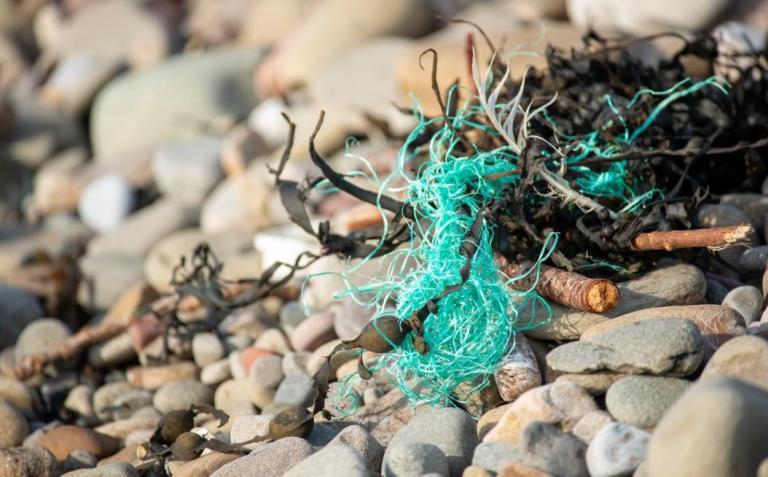Proposals under this topic are expected to identify a set of suitable innovative smart and sustainable solutions to be tested, validated and demonstrated in real conditions, to address negative impacts of fishing gears on marine life and habitats and promote long-term sustainability in our ocean and seas. Interdisciplinary approaches and close cooperation between researchers, fishing industry, fisheries managers and other stakeholders will be fundamental to the development, introduction and acceptance of innovative, smart and sustainable fishing technologies.
Proposals are expected to address one of the following issues:
- Circular aspects: design cost-effective and sustainable fishing gears applying a life-cycle approach, using environmentally-friendly materials (e.g. recycled, recyclable, biodegradable, durable, upgradable) and including recycling and reusing opportunities of end-of-life gears and recovered ghost gears;
- Environmental impacts: reducing harmful impacts of fishing gears on marine fauna, habitats and seabed: e.g. minimizing pollution including from hazardous chemicals and microplastics; reducing negative effects on sensitive and endangered species by reducing bycatches and ghost fishing and through improving mapping, tracking and recovery of abandoned, lost or otherwise discarded fishing gears. All proposals should also take into account selectivity requirements of the fishing gears. In addition, all proposals should address emission reduction objectives, including energy efficiency and resources consumption in gear manufacturing process and in fishing operations.
Each project will test in real conditions at least three sustainable, cost-effective and innovative solutions developed under EU, national, regional programmes or privately funded, for sustainable and low-impact fishing gears (e.g.: Horizon Europe and Horizon 2020; LIFE, the EU Maritime, Fishery and Aquaculture Fund – EMFAF and its predecessor) as well as outcomes of EU funded projects (e.g.: NetTag[1]; Oceanets[2], Bluenet[3], marGnet[4], Biogeras[5]). These three solutions will either address environmental impacts of fishing gears or the circular aspects of fishing gears and use of sustainable materials.
Awareness raising actions should be included to provide users of fishing gear containing plastic proper information about, for example, the availability of re-usable alternatives and re-use systems, appropriate waste management options available and best practices, as well as about the plastic content in fishing gear.
The projects funded under this topic will address all following issues:
- build links with other Mission activities and other relevant activities within the lighthouse and its area to maximize synergies, as well as with the European Blue Parks, other Mission lighthouses;
- build links with the Mission implementation monitoring system that will be part of the Mission Implementation Support Platform and with the sea and river basin lighthouse support facilities and platforms, for reporting, monitoring and coordination of all relevant implementation activities in the lighthouse area as well as with the Blue Parks technical support platform;
- support the Ocean and water knowledge system, in particular by contributing to monitoring, modelling and knowledge creation and data.
SMEs, early-stage business and scale-ups involved in Mission projects entailing innovative, scalable and sustainable business ventures from traditional and emerging blue economy sectors are invited to join the BlueInvest community and benefit from the BlueInvest Fund[6].
Proposals are expected to show how their activities and results will achieve the Mission’s objectives, in line with the timeframe of the Mission phases, i.e.: by 2025 for the ‘development and piloting’ phase and 2030 for the ‘deployment and upscaling phase’
Project results are expected to contribute to all the following expected outcomes:
- Portfolios of solutions for low-environmental impact fishing gears and minimised end-of life waste, including through recycling and reuse;
- Reduced marine pollution caused by waste from fishing activities, in line with among others the Single Use Plastic Directive and the Port Reception Facilities Directive;
- Preserved marine fauna and reduction of accidental catches (mainly of Endangered, Threatened and Protected (ETP) species), including the harmful effects of ghost fishing gears;
- Improved and preserved marine habitats, including seabed, and reduced negative effects of abandoned, lost or otherwise discarded fishing gears;
- Improved mapping, tracking and recovery of abandoned, lost or otherwise discarded fishing gears.
- Contributed to the implementation of EU legislation, e.g.: the Directive on the reduction of the impact of certain plastic products on the environment (Directive 2019/904)31;
- Increased users’ choices and responsible user behaviours.
Link with CMA Goals
Goal I: Healthy marine and coastal ecosystems / Priority 1: Ensure the protection and sustainability of the marine ecosystem

